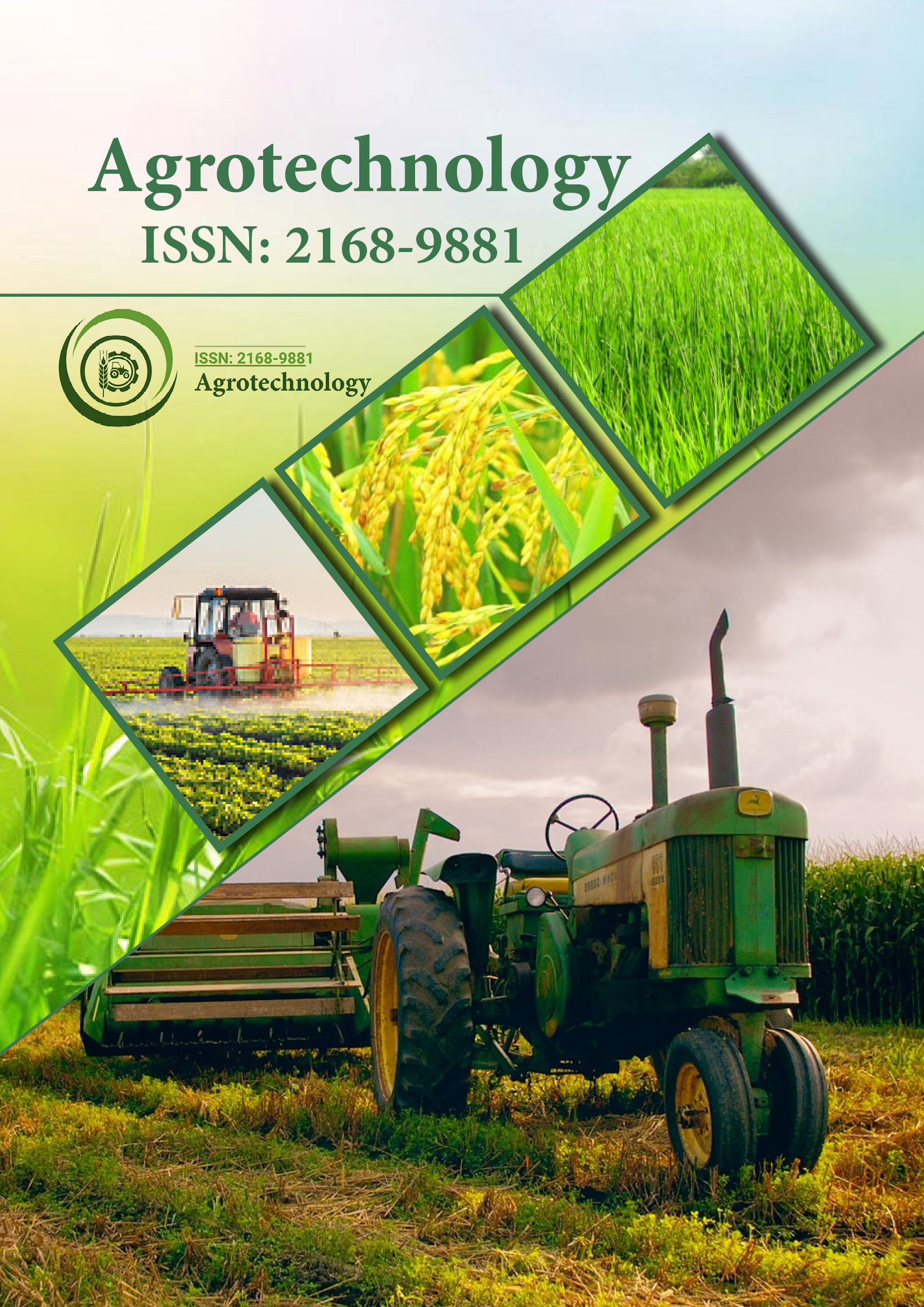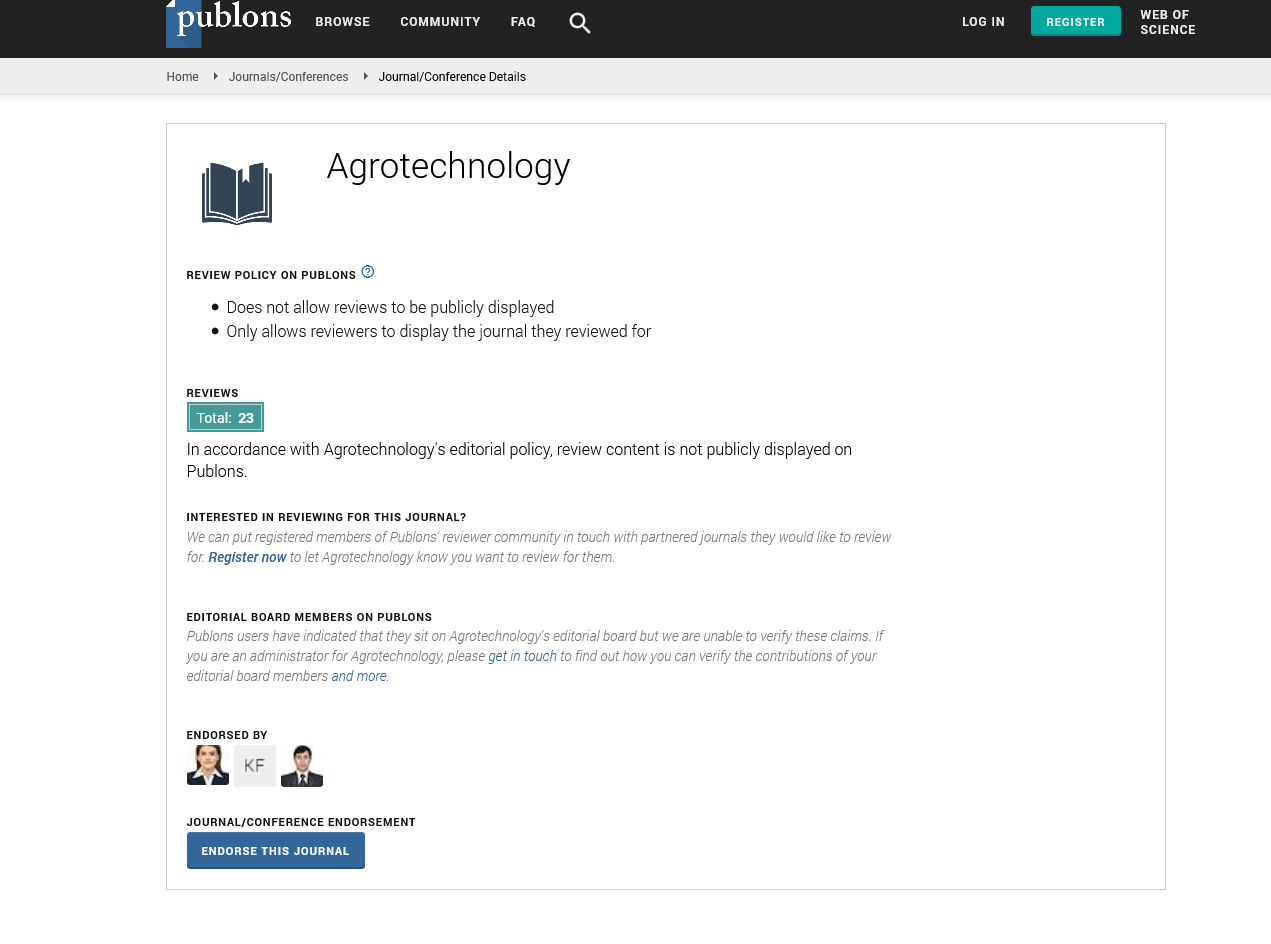Indexed In
- Open J Gate
- Genamics JournalSeek
- Academic Keys
- ResearchBible
- Cosmos IF
- Access to Global Online Research in Agriculture (AGORA)
- Electronic Journals Library
- RefSeek
- Directory of Research Journal Indexing (DRJI)
- Hamdard University
- EBSCO A-Z
- OCLC- WorldCat
- Scholarsteer
- SWB online catalog
- Virtual Library of Biology (vifabio)
- Publons
- Geneva Foundation for Medical Education and Research
- Euro Pub
- Google Scholar
Useful Links
Share This Page
Journal Flyer

Open Access Journals
- Agri and Aquaculture
- Biochemistry
- Bioinformatics & Systems Biology
- Business & Management
- Chemistry
- Clinical Sciences
- Engineering
- Food & Nutrition
- General Science
- Genetics & Molecular Biology
- Immunology & Microbiology
- Medical Sciences
- Neuroscience & Psychology
- Nursing & Health Care
- Pharmaceutical Sciences
Commentary - (2024) Volume 13, Issue 3
Innovative Practices for Clayey Region Groundwater Management
Alcamo Luis*Received: 23-Aug-2024, Manuscript No. AGT-24-26683; Editor assigned: 26-Aug-2024, Pre QC No. AGT-24-26683 (PQ); Reviewed: 10-Sep-2024, QC No. AGT-24-26683; Revised: 17-Sep-2024, Manuscript No. AGT-24-26683 (R); Published: 25-Sep-2024, DOI: 10.35248/2168-9891.24.13.376
Description
Water management is a important concern in agriculture, particularly in regions where water scarcity and soil characteristics pose challenges to effective irrigation. In old clayey lands, traditional flood irrigation methods have been commonly used, but they often lead to inefficient water use and negatively impact groundwater potentiality. Modern irrigation techniques, such as drip and sprinkler systems, offer more precise water application, potentially improving water use efficiency and sustaining groundwater resources. An assessment of modern irrigation versus flood irrigation on groundwater potentiality in these areas highlights significant differences in efficiency, sustainability, and overall impact on agricultural productivity.
Flood irrigation, one of the oldest irrigation methods, involves the release of water across the surface of a field, allowing it to flow and cover the entire area. While this method is relatively simple and inexpensive to implement, it is notoriously inefficient, especially on clayey soils. Clayey soils have high water retention capacity but low permeability, meaning that water applied through flood irrigation tends to sit on the surface or evaporate rather than infiltrate deeply. These results in substantial water loss, reduced groundwater recharge, and often lead to waterlogging, which can harm crops and soil health.
In contrast, modern irrigation systems, such as drip and sprinkler irrigation, offer targeted water application that matches the specific needs of crops and soil conditions. Drip irrigation involves delivering water directly to the root zone of plants through a network of pipes and emitters, ensuring minimal water loss due to evaporation or runoff. Sprinkler systems distribute water through a network of pipes and sprinklers, simulating natural rainfall and providing uniform coverage. These systems can be precisely controlled to apply water in optimal amounts and at appropriate times, significantly enhancing water use efficiency.
The primary advantage of modern irrigation systems over flood irrigation in old clayey lands is their ability to reduce water wastage. By delivering water directly to the root zone, drip irrigation minimizes evaporation and runoff, ensuring that more water is available for plant uptake. This is particularly important in clayey soils, where surface water can easily evaporate or cause waterlogging. Sprinkler systems, while not as precise as drip irrigation, still offer more controlled water application compared to flood irrigation, reducing the risk of over-irrigation and associated problems.
Another essential aspect of modern irrigation systems is their potential to improve groundwater recharge. In flood irrigation, the excessive application of water can lead to surface runoff, which does not contribute to groundwater recharge. Instead, it often results in water being wasted or causing erosion and nutrient leaching. Modern irrigation techniques, by applying water more efficiently and in smaller, controlled amounts, promote better soil infiltration and reduce surface runoff. This enhances the potential for groundwater recharge, which is essential for maintaining sustainable water resources, particularly in areas with declining water tables.
Furthermore, modern irrigation systems can help mitigate the adverse effects of waterlogging and soil salinization. In flood irrigation, the excessive application of water can cause the water table to rise, leading to waterlogged conditions that are detrimental to crops. High water tables can also contribute to soil salinization, as dissolved salts are brought to the surface through capillary action. This salinization can degrade soil health and reduce agricultural productivity over time. Drip and sprinkler irrigation systems, by applying water more precisely and in appropriate amounts, help maintain a balanced soil moisture level, preventing waterlogging and minimizing the risk of salinization.
The economic benefits of modern irrigation systems are also noteworthy. Although the initial investment in drip or sprinkler irrigation infrastructure can be significant, the long-term savings in water usage and increased crop yields can offset these costs. Efficient water use leads to lower water bills and reduced energy costs for pumping water. Additionally, healthier crops resulting from optimal irrigation can lead to higher yields and better-quality produce, increasing farmers' profitability. Over time, the return on investment for modern irrigation systems can be substantial, making them a financially viable option for farmers in old clayey lands.
Despite the clear advantages of modern irrigation systems, their adoption in many regions remains limited due to several barriers. The initial capital investment required for installing drip or sprinkler systems can be prohibitive for smallholder farmers, who often operate on tight budgets. Additionally, the maintenance and technical expertise needed to manage these systems effectively can be a challenge, particularly in areas with limited access to technical support and training. Addressing these barriers through financial incentives, subsidies, and capacity-building programs is essential for promoting the widespread adoption of modern irrigation technologies.
Moreover, the assessment of modern irrigation versus flood irrigation must consider the broader environmental impacts. Efficient water use in agriculture not only conserves water resources but also reduces the strain on freshwater ecosystems and biodiversity. By minimizing surface runoff and promoting groundwater recharge, modern irrigation systems contribute to the sustainability of water resources, benefiting both agricultural and natural ecosystems. This holistic approach to water management is essential for achieving long-term food security and environmental sustainability.
In conclusion, the assessment of modern irrigation versus flood irrigation on groundwater potentiality in old clayey lands underscores the superiority of modern irrigation techniques in enhancing water use efficiency, promoting groundwater recharge, and sustaining agricultural productivity. Drip and sprinkler irrigation systems offer precise water application, reducing water wastage, mitigating waterlogging and salinization, and providing economic benefits to farmers. However, the widespread adoption of these systems requires addressing financial and technical barriers through targeted interventions and support programs. By promoting modern irrigation technologies, we can achieve more sustainable and resilient agricultural systems, ensuring the long-term viability of both water resources and agricultural livelihoods in old clayey lands.
Citation: Luis A (2024). Innovative Practices for Clayey Region Groundwater Management. Agrotechnology. 13:376.
Copyright: © 2024 Luis A. This is an open access article distributed under the terms of the Creative Commons Attribution License, which permits unrestricted use, distribution, and reproduction in any medium, provided the original author and source are credited.


